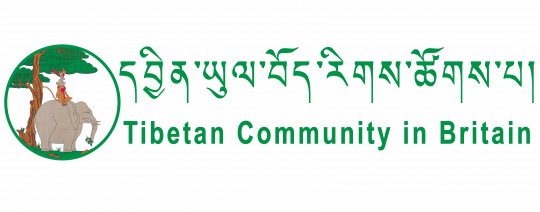 STATEMENT OF UK BUDDHIST ORGANISATIONS
STATEMENT OF UK BUDDHIST ORGANISATIONS
RE: PROTESTS AGAINST HIS HOLINESS THE DALAI LAMA
by the International Shugden Community/ New Kadampa Tradition
LONDON, SEPTEMBER 2015
We, the undersigned UK Buddhist organisations, state that we have no connection to, or association with, the protests against His Holiness the 14th Dalai Lama staged in the UK by the International Shugden Community / New Kadampa Tradition. We actively dissociate ourselves from any activity of this organisation.
We assert that any differences of opinion among Buddhist organisations are better expressed in a peaceful, respectful and reasonable manner. We are especially concerned about protestors’ aggressive, misleading and unethical behaviour and the confusing image of Tibetan Buddhism this presents to the UK public.
The UK Buddhist Organisations signed up to this statement express their respect and support for His Holiness the Dalai Lama’s strong commitment to promoting religious harmony and mutual understanding across all the world’s major religious traditions. Religious harmony is one of His Holiness’s three main lifelong commitments. Consequently, he takes a strong stance when it comes to sectarian intolerance. It is for this very reason – that the International Shugden Community / New Kadampa Tradition is sectarian – that the activities of the protestors are deemed unacceptable.
We further express our complete confidence in His Holiness the Dalai Lama and his advice.
Further detailed information on the controversy, the nature of the ISC/NKT and web links to helpful reference materials are found beneath our signatures.
LIST OF SIGNATORY BUDDHIST ORGANISATIONS
Awakened Heart Sangha UK
Bodhicharya Kent
Bodhicharya Somerset
Bodhicharya Sussex
Bodhicharya Totnes
British Buddhist Community of the UK
Buddhist Society, London
Cham Tse Ling, Preston
Drukpa UK
Dzogchen Community UK
Gomde UK Tibetan Buddhist Centre
Jamyang Bath
Jamyang Leeds
Jamyang London
Jamyang Liverpool
Jamyang Mindroling, Coventry
Jamyang Salisbury
Kagyu Dechen Dzong, Yorkshire
Kagyu Ling, Manchester
Kagyu Samye Dzong, London
Kum Nye UK
Land of Joy, Northumberland
Lelung Dharma Centre, London
Lam Rim Bristol
Lam Rim Wales
Lam Rim Wilts & Glos
Palpung Changchub Dargyeling, Wales
Pundarika UK
Rigpa UK
Sakya Dechen Ling, London
Sakya Thinley Rinchen Ling, Bristol
Sakya Thubten Ling, Bournemouth
Saraswati Study Group, Somerset
Togme Sangpo Study Group, Scotland
Vajra Kalyana Mitrata UK
White Tara Meditation Group, Oxford
Yeshe Study Group, Cumbria
THE DHOLGYAL/ SHUGDEN CONTROVERSY
There are four main Tibetan schools of Buddhism: Geluk, Sakya, Nyingma and Kagyu. The schools are based on particular sets of teachings which arose at different times during Tibet’s history. The teachings of each are considered to be appropriate to different minds; in the end, their practice leads to the same goal of Enlightenment. Tibetan Buddhism is a Wisdom and Compassion tradition, the oral lineages of which have been handed down without a break from the time of the historical Buddha Shakyamuni. In contrast, the propitiation of a renegade ‘Shugden’ entity carries with it a long history of sectarian disharmony between the Geluk and other schools.
At a crucial juncture for Tibet, occupied for over 50 years by the People’s Republic of China, and at a time when Tibetan culture is deeply threatened, together with its unique and effective practice of Buddhism, there is a strong need for harmony and co-operation. His Holiness the Dalai Lama has highlighted the negative influences, and the implications for the future, of the divisive, sectarian practice of propitiating ‘Shugden’. His Holiness requests his own disciples not to engage in this practice, but has also made clear that
whether or not his advice is heeded is a matter of individual choice. However,
contrary to protesters’ claims, the Dalai Lama has not banned this practice; rather
he has strongly advised against it.
Regarding ‘Shugden devotees’ in India and other exile communities of Tibetans, neither Amnesty International (1998) nor the Supreme Court in Delhi (2010) could ascertain any violation of human rights when checking on claims that devotees had been subjected to systematic discrimination and infringement of their human rights.
WHAT IS THE INTERNATIONAL SHUGDEN COMMUNITY AND THE NEW KADAMPA TRADITION ?
The International Shugden Community (ISC) is the latest in a series of front organisations set up by members of the New Kadampa Tradition (NKT), a UK religious charity based in Ulverston, Cumbria under the guidance of a ‘Supreme Leader’, Kelsang Gyatso. This wealthy organisation with members worldwide has a long history of antagonism to the Dalai Lama and rejects his authority. Since early 2014, the ISC has staged aggressive protests during His Holiness the Dalai Lama’s visits to America, Australia and Europe.
The NKT is composed in the main of non-Tibetans who have little or no ability to speak or read Tibetan language and consequently little or no access to Tibetan Buddhist culture except through the writings of Kelsang Gyatso. Although the organisation follows an ethnic Tibetan teacher and utilises Tibetan Buddhist terminology, it does not consider itself a Tibetan Buddhist organisation – although, confusingly, its adherents often wear Tibetan coloured monastic robes, making it impossible for the public to tell the difference between those who have and whose who have not taken full Buddhist monastic vows.
In their campaign against the Dalai Lama, the International Shugden Community / New Kadampa Tradition has aligned itself with the Chinese Communist Party’s drive to undermine the Tibetan religious leader.
FURTHER NOTES:
(1) There are four main traditions of Tibetan Buddhism, the oldest the Nyingma (8th century), two later ones – the Sakya and Kagyu (11th/12th centuries), with the most recent the Geluk (14th/15th centuries). The Jonang tradition is considered a 5th. There is an even more ancient tradition, that of Bon, and a number of surviving smaller schools.
(2) The Dalai Lama’s advice on Dholgyal/ Shugden can be found on his official website: http://www.dalailama.com/messages/dolgyal-shugden
(3) More information on the history of various front organisations (International Shugden Community formed 2014-15, Western Shugden Society formed 2008-14 and Shugden Supporters Committee), of the New Kadampa Tradition itself and its ‘Supreme Leader’, Kelsang Gyatso, can be found at: http://info-buddhism.com/Western_Shugden_Society_unlocked.html
(4) Shadow Boxing on the Path to Nirvana by Madeleine Bunting, The Guardian, 6 July 1996: “The SSC’s [Shugden Supporters Committee] campaign against the Dalai Lama is a dream scenario for the Chinese Government. In 1993, they decided their best tactic for Tibet, this most troublesome province of the People’s Republic, was to divide the Tibetans among themselves. Eighteen months ago, Chinese documents began to appear undermining the Dalai Lama as a religious authority, indicating a shift of strategy. The SSC insist in their press releases that they have no connection with the Chinese. But are they inadvertently doing the Chinese’s work for them?
(5) See report: ‘China’s new directive on controversial Shugden spirit in Tibet in bid to further discredit Dalai Lama’ at http://www.savetibet.org/chinas-new-directive-on-controversial-shugden-spirit-in-tibet-in-bid-to-further-discredit-dalai-lama/#sthash.A084NZU1.dpuf

